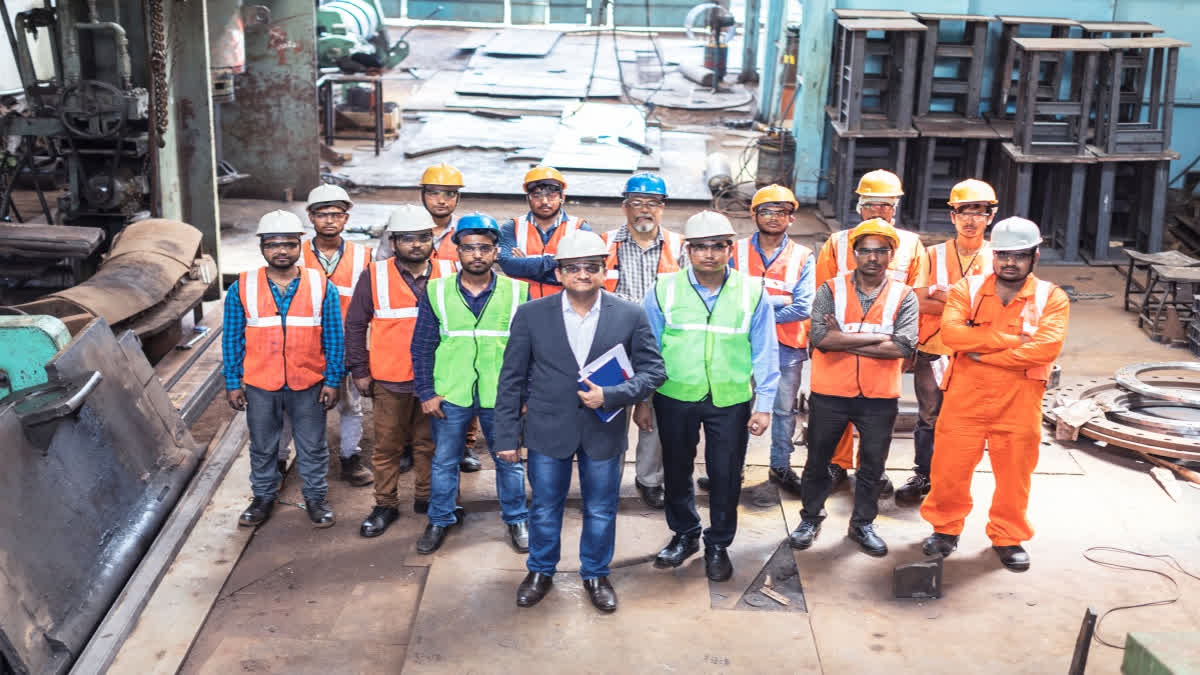New Delhi: More than two decades since its inception, for the first time ever, India has been made the chair of the Colombo Process, a regional consultative process on the management of overseas employment and contractual labour for countries of origin in Asia.
"Promoting safe, orderly and legal migration," External Affairs Ministry spokesperson Randhir Jaiswal posted on X, formerly known as Twitter, on Wednesday.
"India assumed the Chair of Colombo Process for 2024-26, for the first time since its inception," Jaiswal stated. "Colombo Process is a Regional Consultative Process of migrant worker origin countries from South and SE Asia. It serves as a forum for exchange of best practices on overseas employment.”
So, what exactly is the Colombo Process?
The Colombo Process – also known as the Regional Consultative Process on the Management of Overseas Employment and Contractual Labour for Countries of Origin in Asia – was established in 2003. It was launched during a ministerial consultation held in Colombo, Sri Lanka, hence the name. It brings together South and Southeast Asian labour-sending countries in a member state-driven, non-binding regional consultative process on migration to facilitate dialogue and cooperation on issues of common interest and concerns relating to labour mobility.
The Colombo Process is a regional consultative process comprising 12 member states of Asia (countries of origin of migrant workers): Afghanistan, Bangladesh, China, India, Indonesia, Nepal, Pakistan, the Philippines, Sri Lanka, Thailand and Vietnam.
It provides an important platform for consultations on the management of overseas employment and contractual labour. The Process is non-binding and decision-making is by consensus. The Process is coordinated through permanent missions of member states at the United Nations in Geneva. India has been member of Colombo Process since its inception in 2003.
According to the International Organisation for Migration (IOM), the Colombo Process aims to provide a forum for Asian labor-sending countries to meet the following objectives: share experiences, lessons learned and best practices on overseas employment and contractual labour; consult on issues faced by overseas workers, and labour sending and receiving states, and offers practical solutions for the well-being of overseas workers, particularly the vulnerable overseas workers; optimise development benefits from organised overseas employment, and enhance dialogue with countries of destination; and review and monitor the implementation of the ministerial recommendations and identify further steps for action.
What was the necessity to form such a platform?
According to the IOM, some three million Asian workers (men and women) leave their countries each year to work overseas. A large proportion of these workers (from South and Southeast Asia) head for the Gulf countries while some others move to North America, Europe and other Asian countries. India, it needs to be noted here, is a key labour-sending country to countries particularly in the Gulf.
"As Asian overseas worker populations grow in numbers and diversify in terms of destination and source countries, their impact is increasingly felt regionally and internationally," a note on the IOM website reads.
"Overall numbers of Asian overseas workers are likely to increase due to declining working populations in many industrialised economies, combined with continued need for skilled/low-skilled workers."
The IOM further states that countries of origin are increasingly engaged in protecting their overseas workers from exploitative practices in recruitment and employment, in providing them with appropriate services before departure and during their stay overseas, as well as in assisting them in their return and reintegration back home.
"Countries of origin affirmed that greater efforts are needed to improve regional response to the challenges of labour mobility and to optimise the benefits of organised labour mobility, including the development of new markets and increasing remittance flows through formal channels; building institutional capacity and inter-ministerial coordination; increasing cooperation with destination countries in protecting temporary contractual workers; providing better access to labour markets; and preventing irregular labour mobility.
What are the priority areas of the Colombo Process?
The Colombo Process addresses five thematic priority areas and while also incorporating four crosscutting themes into these priority areas. The thematic priority areas are skills and qualification recognition processes, fostering ethical recruitment practices, pre-departure orientation and empowerment, promoting cheaper, faster and safer transfer of remittances, and labour market analysis.
The crosscutting themes are migrant health, operationalisation of the migration-related elements of the UN's Sustainable Development Goals (SDGs), promotion of equality for women migrant workers and consular support for migrant workers
So much for the labour-sending countries. What about the labour-receiving countries?
Here, the Abu Dhabi Dialogue (ADD) comes into the picture. According to a brief shared by the External Affairs Ministry, the ADD is a regional, voluntary and non-binding consultative process. It consists of the 12 member states of the Colombo Process and six Gulf countries of destination: Bahrain, Kuwait, Oman, Qatar, Saudi Arabia and the United Arab Emirates, as well as Malaysia.
It was established in 2008 as a forum for dialogue and cooperation between Asian countries of labour origin and destination to facilitate regional cooperation on contractual labour mobility, sharing of best experiences and learning from one another's experience. India has been a member of the ADD since 2008.
Apart from the ADD, the Colombo Process undertakes various collaborative projects to address specific issues related to labour migration. These projects often involve partnerships with international organisations, such as the IOM and the International Labour Organisation (ILO).
To conclude, the Colombo Process is a collaborative initiative undertaken by Asian nations that export labour to address the challenges of labour migration more effectively. Its primary goals are to safeguard the rights of migrant workers and maximise the benefits of labour migration for all parties involved, including the workers themselves, their home countries, and the host nations.
Through continuous dialogue, cooperation, and capacity-building efforts among member states, the Colombo Process seeks to align labour migration practices with regional and global development objectives, ensuring a win-win situation for all stakeholders.



